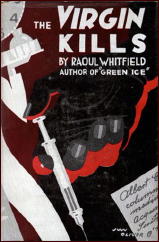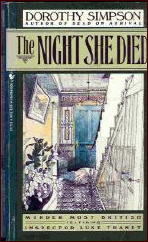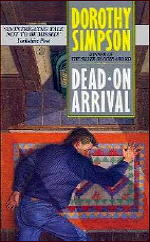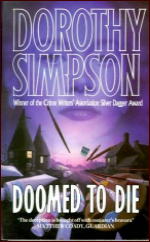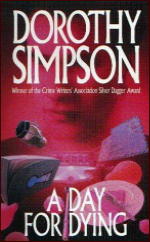Sat 3 Jan 2015
A Review by David Vineyard: UMBERTO ECO – The Prague Cemetery.
Posted by Steve under Reviews[2] Comments
UMBERTO ECO – The Prague Cemetery. Houghton Mifflin Harcourt, US, hardcover, November 2011. First published: October 2010. Translated by Richard Dixon.
“If I have become French, it is only because I couldn’t bear being Italian.â€
I warn you this is not an easy book and when you know its subject, many of you may choose not to read it. If you appreciate literate, witty, and brilliant writing though, you should. It is one of the best books I’ve read in years once I recognized where Eco was going. That he pulls off the tightwire act that this book is will be reason enough to read it.
The quote above is the voice of the narrator of Umberto Eco’s novel The Prague Cemetery, Captain Simone Simoini, the grandson of the actual historical figure Captain Simonini. Simone is our narrator, or one of them, and a worse human being is hard to imagine. Racist, jingoist, police spy, terrorist (19th Century style), propagandist, plagiarist …. keep that last in mind, because that last little skill will define Simone Simonini as one of the worst men whoever lived.
The Prague Cemetery sweeps across 19th Century Europe from the revolutionary period of the late 1840‘s (1848 the key year) to 1895 with the turn of the century in view. Through it we follow Simone into every back corner, byway, narrow alley, and cordite-smelling conspiracy of that conspiratorial age, with a small army of historical figures such as his grandfather, Garibaldi, Leo Taxil, Serge Nilus, an alienist he insists on calling Froide who convinces him to reveal his story…
Some of those names may not be familiar, but they would be if you knew the history of conspiracy in that era. All the while he is shadowed and haunted by the mysterious young Jesuit priest Abbe Dalla Picola, who shares the narration of the story and the author’s prejudices including his hatred and fear of women.
It is a world of violence and lies. Italian freedom fighters allegedly strangle priests with their own intestines, the Freemasons plot against everyone and the Jesuits plot against them (“Jesuits are Mason’s dressed like womenâ€), French anarchists plant bombs and celebrate blasphemous Black Mass while the turbulent history of Italian unification, the Paris Commune, and the Dreyfuss affair play their role.
All through this the paranoid, backstabbing Simone wiggles like a serpent his sting along a trail of lies, half truths, and sheer hatred of everyone and every thing. He is a maestro of invective, hatred, vitriol , and paranoia and everything is clouded by the secret services of myriad European countries all conspiring and coming to believe their own lies.
Eco, a leading semiotician, philosopher, and medievalist among other things, burst on the best seller scene with The Name of the Rose and has visited often since. His books are always literate and often informed by his considerable sense of humor. That wit and humor are the saving grace of this book.
This is a very funny book — black humor, but funny. At some point the narrator’s invective takes on an almost Marxian (Groucho, not Karl) air as he lies, cheats, spies, betrays, murders, and schemes his way through a conspiratorial whirl that makes modern talk radio sound tame. The book would be surreal at times if it wasn’t all unfortunately based on facts.
And at the heart of this novel is one of the greatest lies ever fostered on humanity, one that is still believed by prejudiced fools all over the world today, appropriately a scene plagiarized from socialist feuillitonist Eugene Sue’s massive Mysteries of the People (Sue is identified as the narrator’s favorite writer.)
In Sue’s novel the scene describes a meeting in a cemetery of Jesuit conspirators (Sue distrusted and loathed the Jesuits) in the hands of our plagiarist narrator the cemetery is the one in Prague and the conspiracy nothing less than The Protocols of Zion, and it is not a chapter in a novel, but presented as an actual event witnessed by the author (Serge Nilus who first published the Protocols claimed to have been given them by a friend who witnessed the event, the basis for Eco to spin his tale).
Simone Simonini for the purposes of this book is no one less than the author of one of the most influential lies ever told, one with an almost direct link to one of the greatest crimes ever committed. A more unlikely protagonist is hard to imagine, but he and his story compel you to turn the page.
Eco brings this world to life with almost magical skill, exploring all those dark byways of the soul with what one review in the Chicago Tribune rightly called “voluptuous abandon.†It is a cautionary tale for our world of undigested news, rumor, and innuendo, a reminder that information age or not the world has always embraced the great lie with the same zeal it does today. That Eco at times manages to also thrill, horrify, and be laugh out loud funny while revealing those lies is a wonder in itself.
“A German produces on the average twice the feces of a Frenchman.â€
“With Germans, as with women, one never gets to the point.â€
“No one is as rude as a French innkeeper.â€
“The Frenchman doesn’t know what he wants, he only knows he doesn’t want what he has.â€
“The Italian is an untrustworthy, lying, contemptible traitor, himself more at ease with dagger than a sword, better with poison than medicine, a slippery bargainer, consistent only with changing sides in the wind…â€
I should point out Eco is Italian.
On the Masons: “They are like the Jesuits only more confused.â€
“I hate women, what little I know of them.â€
On the brasseries of Paris and their patrons: “They are inverts looking for perverts of either sex…â€
“Civilization will never reach perfection until the last stone of the last church has fallen …â€
Priests: “They are idle and belong to a class as dangerous as thieves and vagrants …â€
“I would say religion is also the cocaine of the people…â€
“We do not know whether animal spirit and genital fluid are the same thing …â€
“Someone said that women are just a substitute for the solitary vice, only you need more imagination.â€
That all literally from Chapter 1.
As Eco points out in a brief afterward, Simone is a collection of different people, a convenience for the writer, and as he concludes, “still among us.†There is also a mystery or two and a revelation that may catch you completely off guard that Simone never quite manages to put together. At times you can almost hear the real author of the Protocols chuckling as he spins his murderous lies, even to himself.
This is a powerful work for all the smiles at its excess. It is impossible to read without the images we are all familiar with of where The Protocols lead, not alone, but with its words scribbled in venom and blood. That this novel can be read as entertainment and at the same time a serious statement about hate and lies is one of the reasons to admire and praise Eco’s talents.
As an added bonus the books is filled with illustrations from the age though not as colorful as those from Eco’s earlier novel The Mysterious Flame of Queen Lorna.
I warn you, this is not for everyone, and I understand why anyone might choose not to read it (it is also nearly 500 pages of small type), but if you do, if you take it as it was written, why it was written, what it has to say to us now and about us then I think you too will find it a remarkable novel despite the difficult subject and the protagonist.
It’s a very funny book about what may be the bloodiest lie ever told, a deadly serious study in paranoia and hateful speech that will have you smiling, and a fascinating journey through the very heart of the conspiratorial urge in man.
